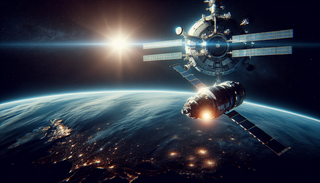
A Capsule Finally Leaves the Hangar
At 10:52 a.m. EDT on 5 June 2024, an Atlas V roared off Cape Canaveral’s pad 41 with a gum-drop–shaped spacecraft on top. Inside Boeing’s CST-100 Starliner sat NASA astronauts Butch Wilmore and Suni Williams, veterans who had both waited—and trained—through half a decade of schedule slips. When the capsule docked to the International Space Station 26 hours later, it completed the first crewed test flight of the long-delayed Commercial Crew vehicle, vaulting Boeing back into a spaceflight conversation it once dominated.
The flight, designated CFT (Crew Flight Test), was more than a photo-op. For NASA it closes a political and logistical hole: since 2020 the agency has relied exclusively on SpaceX Crew Dragons to rotate ISS crews. A second certified transporter means true redundancy; if a vehicle family is grounded after an anomaly, astronauts no longer have to barter for Russian Soyuz seats. That redundancy was the founding premise of the Commercial Crew Program back in 2010—Starliner has finally delivered it.
How Boeing Got Stuck in the Hangar
Boeing’s path looked straightforward in 2014 when it won $4.2 billion in Commercial Crew funding—more than SpaceX’s $2.6 billion. Yet design choices and corporate culture collided with the unforgiving math of orbital mechanics.
• 2019 OFT-1: software integration errors stranded the uncrewed capsule in the wrong orbit, almost destroying it during re-entry.
• 2021 Valve fiasco: 13 propulsion-system valves fused shut after Florida humidity mixed with nitrogen tetroxide propellant, forcing a complete vehicle rollback.
• 2022 OFT-2 redo: Starliner finally reached the ISS empty, but parachutes and tape-wrapped wiring still failed qualification tests.
Each technical scar brought management scrutiny, congressional hearings, and—critically—brain-drain as seasoned engineers left for faster-moving newcomers. Internally Boeing implemented what one propulsion lead called “hardware humility,” adding physical test rigs instead of relying on digital twins. The CFT hardware carried 600 design fixes compared with the 2019 capsule.
The Flight Itself
Aside from a handful of niggles—two Reaction Control System thrusters auto-bypassed for low chamber pressure and a thermal loop sensor showed off-nominal data—CFT looked boring in the best aerospace sense. Docking occurred 10 minutes ahead of schedule. During six days docked, Wilmore and Williams power-cycled avionics, tested manual piloting, and verified “safe-haven” life-support durations.
Landing at White Sands, New Mexico, used Starliner’s unique airbags, kicking up a perfect desert pancake of dust. Recovery teams reported interior temps within nominal ranges, quelling fears that heat-soak through the non-ablative thermal blanket would be excessive.
What Certification Means
NASA will spend the next few months pouring over flight-data packets, but agency insiders expect a green light for six-month operational missions in early 2025. Each post-certification seat will cost roughly $90 million, according to the latest contract modification—more than Dragon’s estimated $55 million but still below pre-Crew costs for Soyuz.
That price delta reflects two big Starliner traits:
- Disposable service module: Boeing jettisons propulsion hardware each flight, while Dragon’s trunk is comparatively cheap.
- United Launch Alliance’s Atlas V: a reliable but retirement-bound rocket whose price per launch hovers around $120 million. From flight three onward Starliner will ride ULA’s next-gen Vulcan, but the cost curve is uncertain.
Even so, NASA buys capability, not lowest bid. Maintaining two independent transportation systems is insurance against catastrophe—a lesson etched after Columbia and the 2011 Soyuz rocket failure.
Ramifications for the Commercial Landscape
-
Certification as a marketing stamp: Boeing can now pitch Starliner for private ISS-National Lab missions or future Starlab and Orbital Reef stations. SpaceX will no longer have a monopoly on crew access for space tourism.
-
ULA’s quiet comeback: Vulcan plus Starliner creates an all-American crew chain. That widens distance from Blue Origin’s still-unflown New Glenn and ties Boeing’s success to Vulcan’s ramp-up schedule.
-
Space talent wars: A successful program helps Boeing attract and retain engineering graduates who increasingly view “Old Space” as a career cul-de-sac.
-
Regulatory precedent: Starliner’s airbag landing system, approved through NASA’s Category 1 flight rules, may inform standards for future lunar landers that ditch ocean splash-downs.
What Could Still Go Wrong
• Valve saga Part II: The long-term fix involves a redesigned seal stack, but desert humidity is not coastal Florida humidity. Engineers will keep nitrogen-purge ground support equipment in force until a root-cause aging study finishes next spring.
• Parachute load margins: Boeing adopted stronger suspension lines, yet certification margins are razor-thin compared to Dragon’s four-chute stack. Closing the gap may require heavier fabric—eroding payload mass.
• Program economics: At two flights per year, fixed costs dominate. Boeing needs a sustained manifest of agency, commercial, and potentially foreign crew buyers to stay in the black.
Beyond the ISS Horizon
ISS funding sunsets no earlier than 2030, but NASA wants multiple commercial stations in low-Earth orbit well before that. With crew transport largely solved, the bottleneck shifts to habitat construction and on-orbit servicing. Starliner’s modular avionics bay was designed to accept lunar-rated hardware, and company officials hint at “CST-200” studies for a deep-space variant.
In other words, Starliner’s delayed arrival may end up perfectly timed for the post-ISS economy—assuming Boeing can keep production lines warm and costs trending down.
Bottom Line
Starliner’s maiden crew voyage is neither the triumphant moonshot Boeing once promised nor the corporate fiasco critics predicted. It is something more consequential: a second, independent pipeline for humans to reach space from U.S. soil. Redundancy rarely makes headlines, but it keeps them from turning tragic. With the capsule safely home and certification in sight, the Commercial Crew Program is finally living up to its plural name.
Sources
- NASA – Boeing Crew Flight Test Blog
- Reuters – Boeing’s Starliner spacecraft blasts off on first crew test flight (5 June 2024)